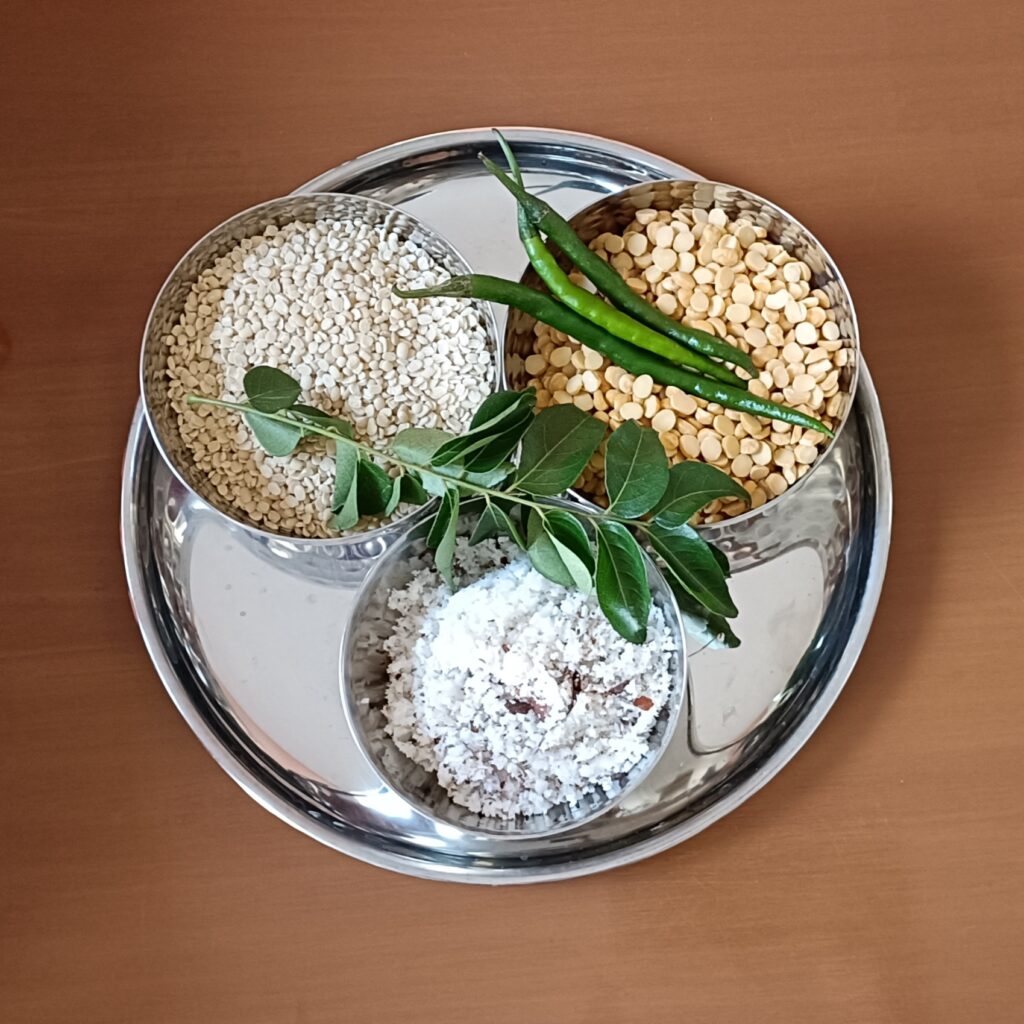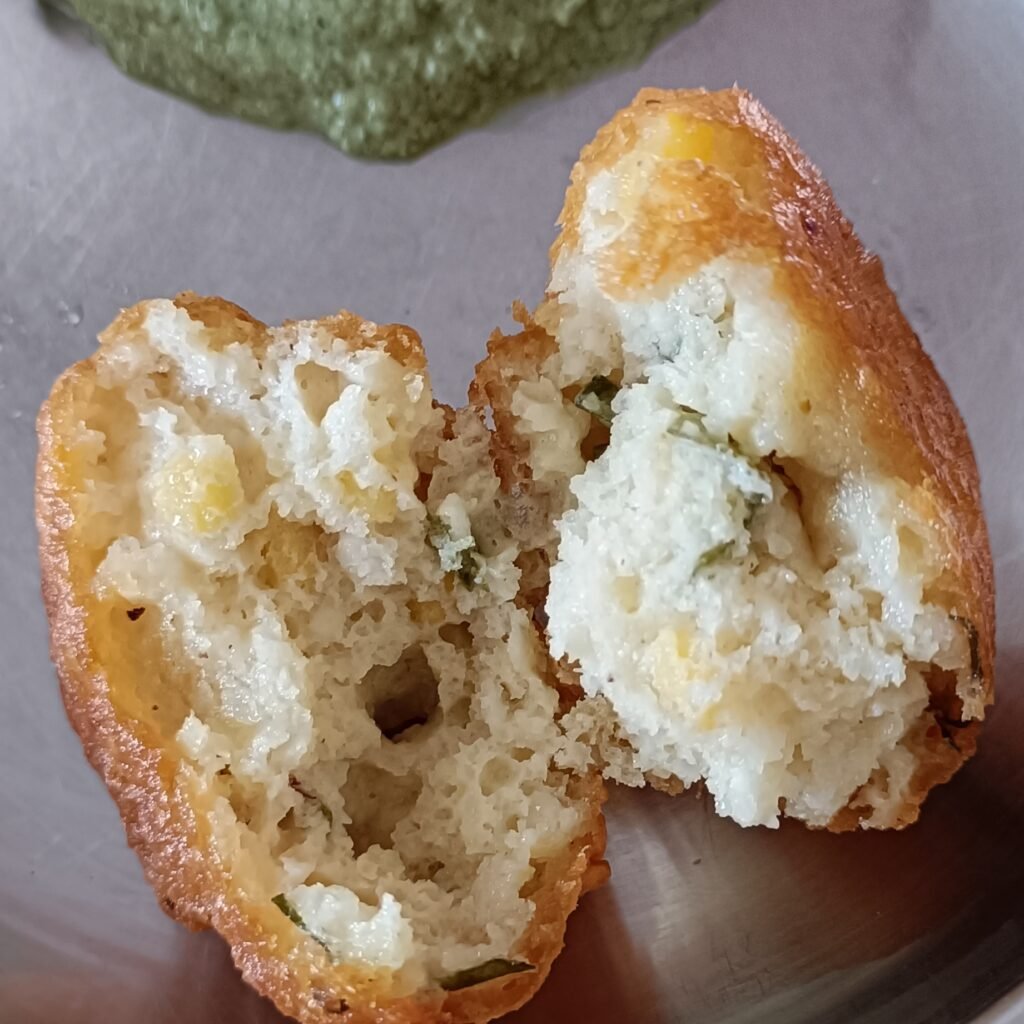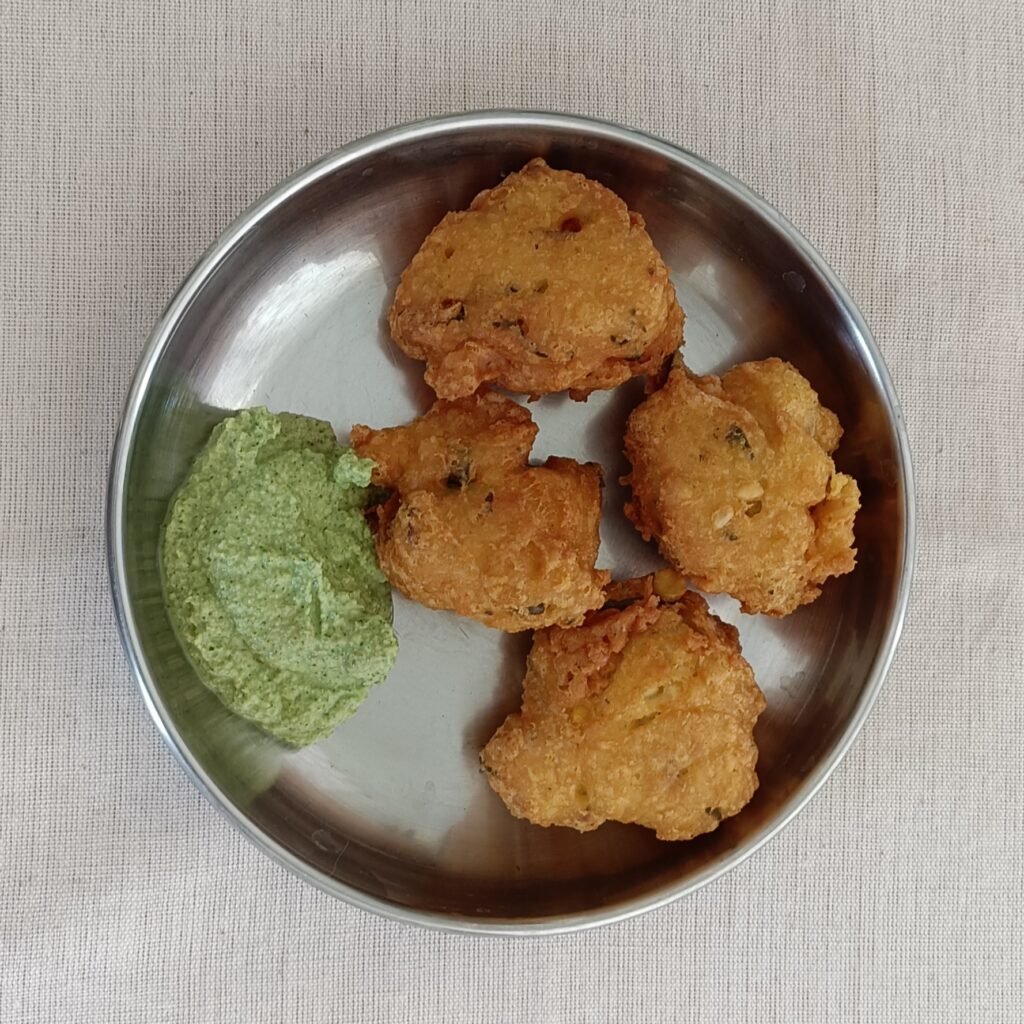Recipe credit: Darshana Muzumdar
Serves 4-6 as part of a traditional Indian breakfast.
Ingredients
- ¾ cups urad dal (black gram dal)
- ¾ cups channa dal (Bengal gram dal)
- ¼ fresh coconut, grated (½ cup grated coconut)
- 3-4 green chillies; use fewer if the chillies are very spicy
- 2 sprigs curry leaves
- Salt to taste
- Groundnut oil for deep frying.
Method
- Wash the two dals and soak them together for around 3 to 4 hours.
- Drain them well in a strainer and grind them coarsely into a dry mixture adding as little water as possible.
- Chop green chillies and curry leaves fine, add them to the ground dals along with the coconut and salt and mix it all well. Keep the mixture covered in a warm place for 12 to 16 hours to ferment. It should rise and become light and fluffy.
- Mix the fermented mixture gently releasing all the air in it.
- Heat oil in a deep frying pan. Take portions of the mixture with a spoon and drop it into the hot oil. Fry the vadas till reddish brown turning them over when one side is brown. Remove with a spatula allowing as much oil to drain away as possible. Use paper napkins placed on a plate if necessary to absorb the extra oil.
- Serve these crisp on the outside and spongy and light from the inside vadas with any wet chutney from this cookbook.
For the Whole-Food Plant-Based (WFPB) version:
- For the whole food version use the urad dal with the skin on and try baking the wadeys or using an appe (or paniyaram) pan with no oil and cooking the vadas by covering the pan.
- Turn the vadas over to cook the other side after one side is done.
- Chutneys are usually whole plant-based so enjoy the vadas with any of the wet chutneys from this recipe book.






Share this:
- Click to share on Facebook (Opens in new window)
- Click to share on WhatsApp (Opens in new window)
- Click to share on Twitter (Opens in new window)
- Click to share on Pinterest (Opens in new window)
- Click to share on LinkedIn (Opens in new window)
- Click to share on Skype (Opens in new window)
- Click to share on Reddit (Opens in new window)
- Click to share on Tumblr (Opens in new window)
- Click to share on Pocket (Opens in new window)
- Click to share on Telegram (Opens in new window)
- Click to print (Opens in new window)

